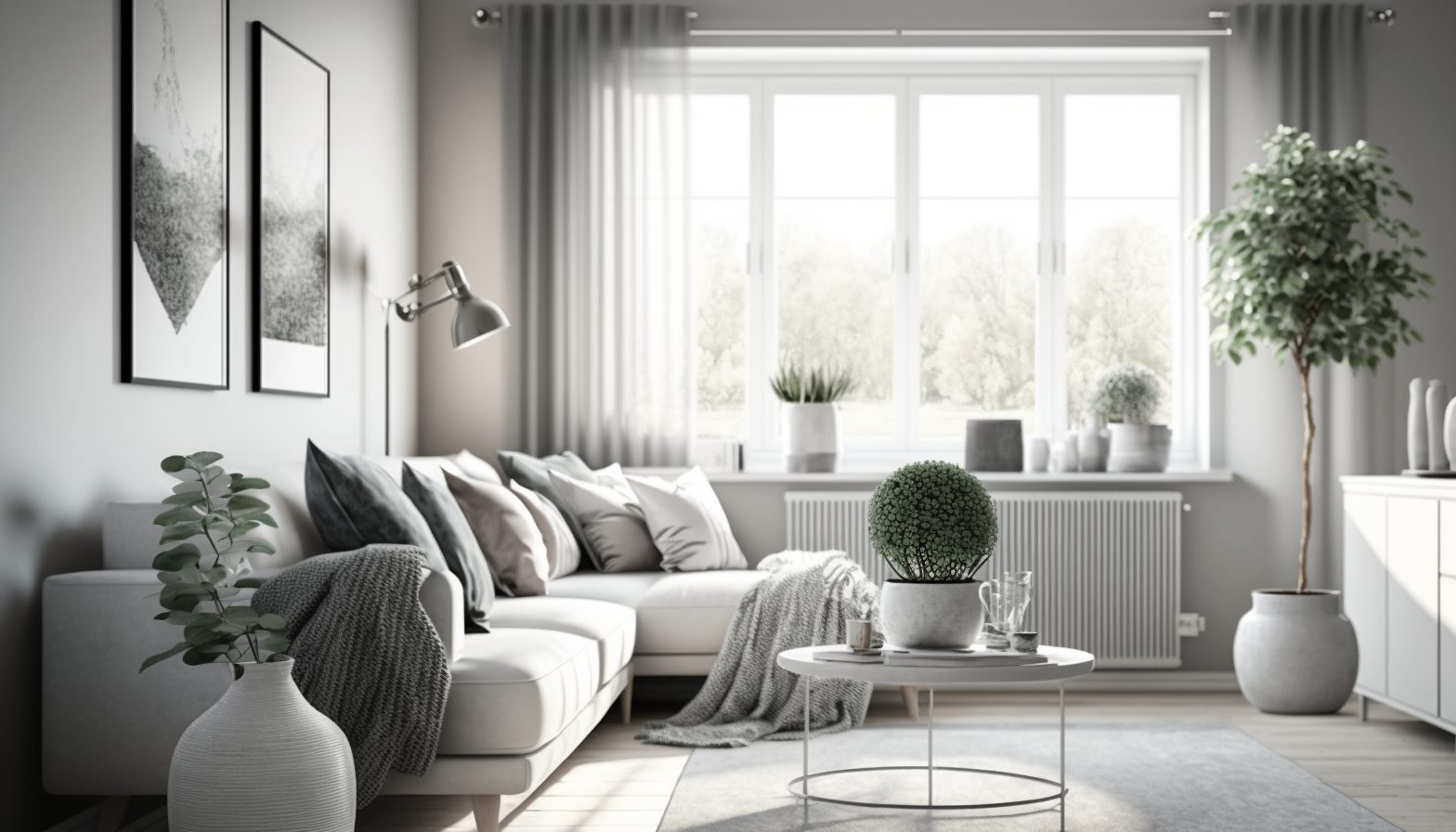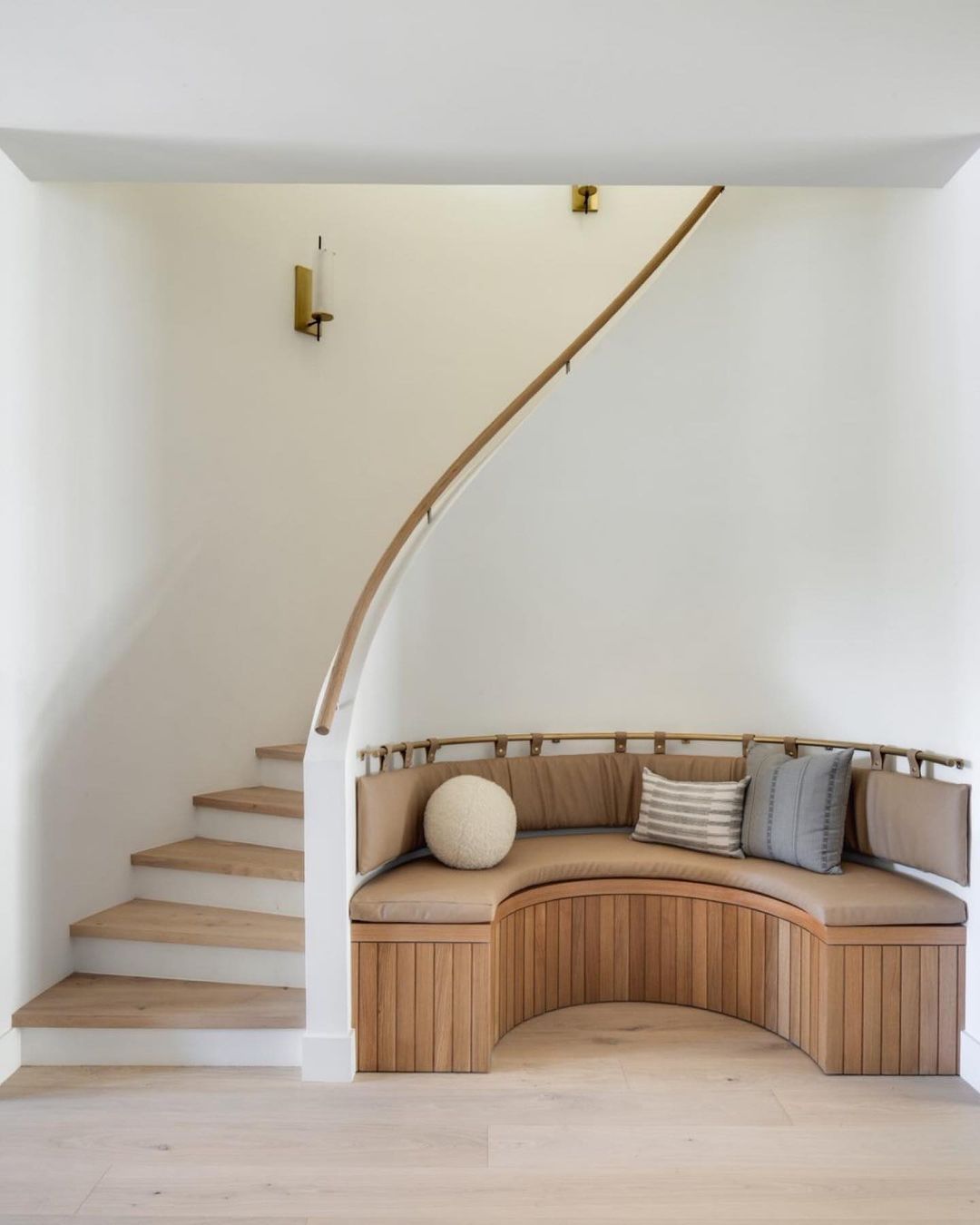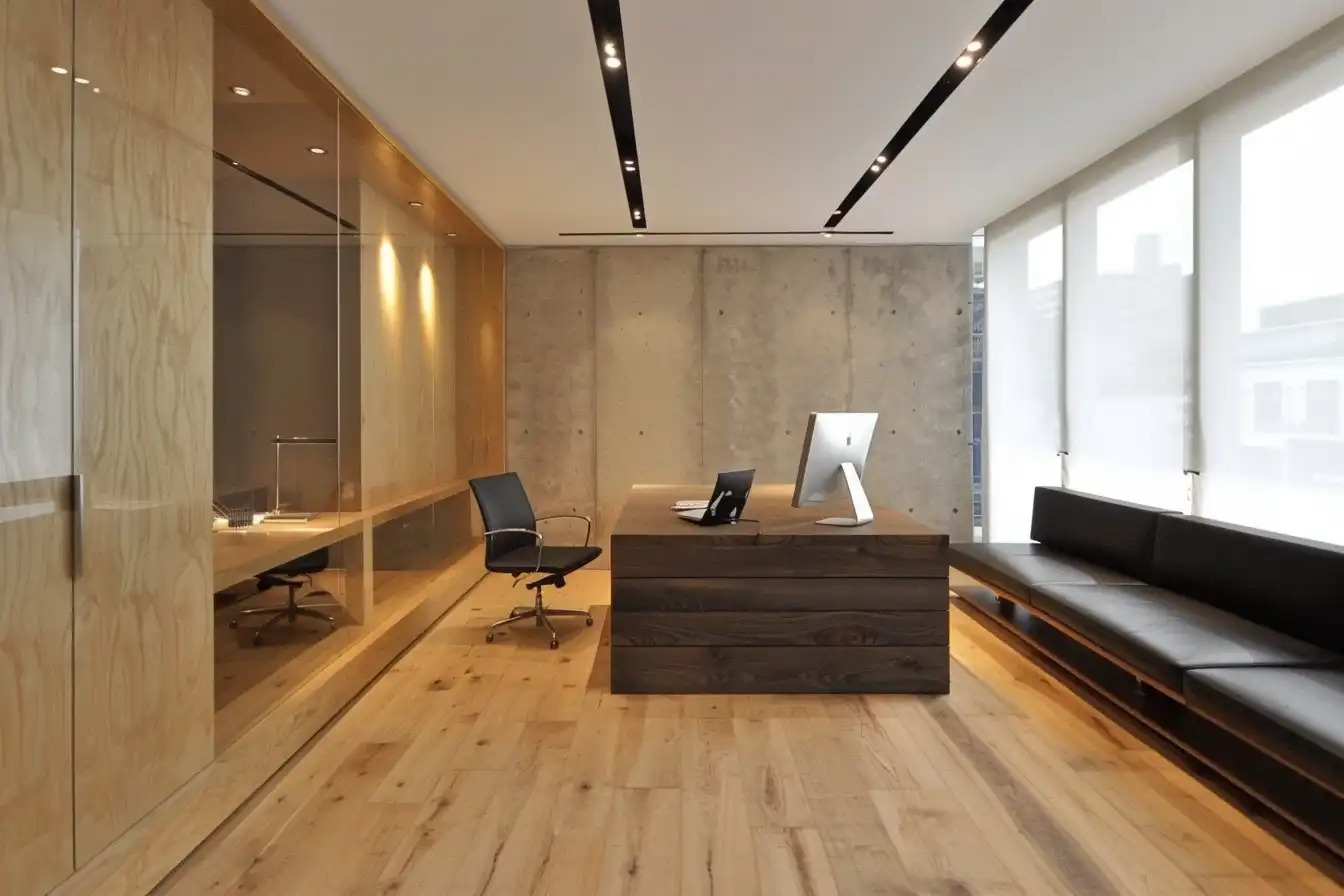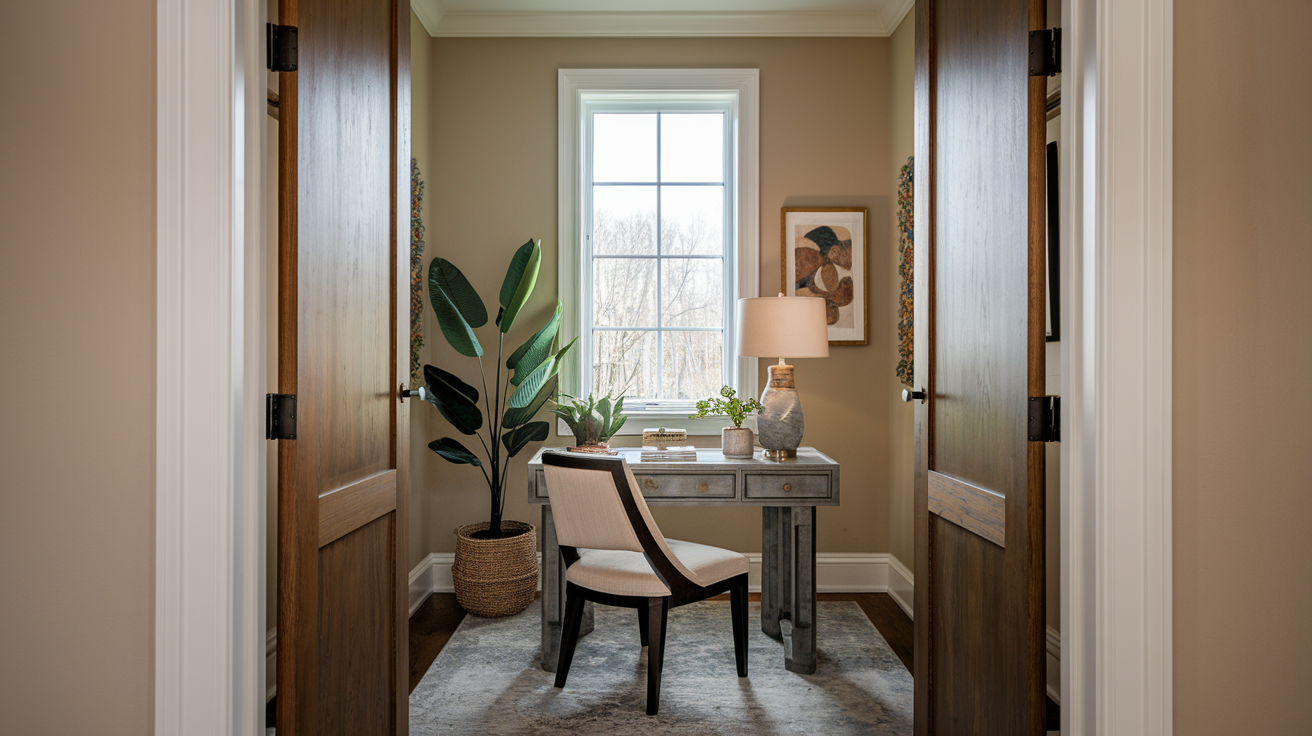Mastering Minimalist Design Create Functional Aesthetic Interiors

Introduction
In today’s fast-paced world, living spaces are often cluttered and overwhelming. Minimalism offers a refreshing perspective, focusing on simplicity and functionality while maintaining aesthetic appeal. This design philosophy is not just a trend; it reflects a deeper desire for clarity and organization in our lives.
Applying minimalist principles can transform interiors into serene sanctuaries. By prioritizing essential elements and eliminating excess, one can create environments that promote mental well-being and enhance daily productivity. Through strategic organization and thoughtful design choices, minimalism allows us to live more intentionally.
Ready to embrace this transformative approach? Join us as we explore the Top 5 minimalist design strategies that can help you master the art of creating functional and beautiful interiors. Each principle will not only inspire but also equip you to curate spaces that reflect your individual style while promoting overall harmony.
Top 5: The Art of Minimalism – Crafting Functional and Aesthetic Interior Spaces
Minimalism has gradually evolved from its origins in art and architecture to influence the way we live. It’s not merely a design trend but a lifestyle choice that prioritizes simplicity, functionality, and beauty. When applied to interior design, minimalism helps craft spaces that are both aesthetically pleasing and supremely practical. In this exploration, we’ll dive deeper into the top five essential elements of minimalism in interior design, revealing how each contributes to creating harmonious environments. We’ll rank these elements from least to most influential, charting a path toward the essence of minimalism.
5. The Power of Color
Color is a potent tool in the minimalist’s palette. Contrary to vibrant and eclectic designs that utilize a variety of hues, minimalism tends to embrace a more subdued color scheme. This means colors that calm and unify rather than overwhelm and distract. The typical minimalist color palette comprises neutral tones like whites, grays, and beiges, each carrying unique qualities that contribute to the ambiance of a space.

- White: Beyond its reputation for purity and cleanliness, white can open up spaces, making them appear more extensive and inviting.
- Gray: This color adds an element of sophistication and versatility, serving as a neutral backdrop that can be warm or cool, depending on undertones.
- Beige: A warm color that brings coziness to a room without overwhelming it, beige can balance other elements within a space.
While muted tones dominate, strategic pops of color through accessories like cushions or artwork can inject personality without disrupting the overall serenity. Understanding the power of color enables one to sculpt interiors that feel uncluttered and peaceful.
4. Natural Light
Natural light is an invaluable asset in minimalist design, offering benefits far beyond mere illumination. Large windows, glass doors, and skylights are key features that enhance spaces. These elements not only allow for the passage of light but also create a seamless connection between indoor and outdoor environments. Natural light accentuates textures and architectural features, reducing the need for excessive decorative elements.
To maximize natural light:
- Opt for sheer window treatments that allow light to flood in while maintaining a degree of privacy.
- Avoid placing heavy furniture or decor items that would obstruct light from flowing into space.
- Employ mirrors and reflective surfaces to bounce light around, enhancing both the brightness and perceived space of a room.
Beyond aesthetics, natural light contributes to well-being. Its presence in a room has been shown to improve mood and productivity, underpinning the minimalist ideology of merging beauty with function.
3. Functional Furniture
The mantra of minimalism is often “less is more,” and nowhere is this more apparent than in the choice of furniture. Functional furniture is at the forefront—pieces that serve multiple purposes while maintaining sleek and elegant aesthetics. In minimalist design, every piece should earn its place, contributing not only to style but also to practicality.
Consider these elements when integrating functional furniture:
- Modular pieces: Allow flexibility in design, enabling spaces to adapt to various needs and activities without sacrificing style.
- Built-in storage: A smart way to conceal clutter and maintain a tidy environment. Items like beds with storage drawers or ottomans with hidden compartments are examples.
- Streamlined designs: Focus on clean lines and understated elegance, allowing furniture to blend effortlessly into a minimalist setting.
The beauty of functional furniture lies in its ability to be an aesthetic centerpiece while also offering practical solutions to everyday living.
2. Clutter-Free Living
Perhaps the most identifiable characteristic of minimalist design is its clutter-free nature. This principle extends beyond a mere visual design choice; it’s fundamental to promoting mental clarity and fostering a sense of calm. Clutter-free living is achieved by routinely evaluating and minimizing possessions, ensuring that the home remains a haven of tranquility.
Here are some strategies to maintain a clutter-free environment:
- Curate with intention: Keep only those decorative items that hold personal value and avoid overcrowding surfaces.
- Implement smart storage solutions that allow you to tuck away items, thus reducing visual noise.
- Adopt regular decluttering practices, perhaps a ‘one-in-one-out’ rule, to keep control over accumulation of items.
Embracing a clutter-free lifestyle not only aligns with minimalist aesthetics but also facilitates a more focused and productive home environment.
1. Intentional Design
At the heart of minimalism is the philosophy of intentional design. The approach dictates that every piece within a space should have a defined purpose or the capacity to evoke joy. This principle goes beyond aesthetics—it connects to personal philosophies, values, and how individuals choose to live their lives.
In incorporating intentional design:
- Ensure that every object serves a purpose or adds to the aesthetic joy of the space.
- Consider the thoughtful placement of items to optimize functionality and flow.
- Prioritize sustainable and high-quality materials, which contribute to both the longevity and beauty of the space.
Intentional design transcends fleeting trends, creating spaces that offer peace, clarity, and support for the well-being of their inhabitants. It is this thoughtful, purposeful curation that stands as the cornerstone of minimalism, redefining how we interact with the environments we create.
In conclusion, as we traverse through the realms of minimalism in interior design, it becomes apparent that this movement is more than just an aesthetic choice—it’s a mindset. By meticulously balancing color, light, furniture, and intention, we craft spaces that are as functional as they are beautiful, seamlessly blending simplicity with depth.
Minimalism in interior design transcends mere aesthetics; it embodies a lifestyle choice that emphasizes simplicity, functionality, and a profound connection to space. As we delve deeper into the principles of minimalism, it’s essential to explore how these concepts collectively enhance the design landscape, creating environments that are not only visually pleasing but also harmoniously functional. Here we present a table of key advantages associated with minimalism, highlighting various categories relevant to this artistic approach:
| Category | Key Features | Advantages | Disadvantages | Ideal Beneficiaries |
|---|---|---|---|---|
| Functionality | Every piece of furniture serves a purpose, maximizing utility. | Reduces clutter, fostering a more organized environment conducive to focus and productivity. | Can feel stark or empty to those accustomed to more decorative styles. | Individuals seeking a more organized and purposeful living or working space. |
| Aesthetic Appeal | Sleek lines and a curated selection of elements that enhance space. | Timeless elegance that avoids trends, ensuring a classic and adaptable look. | May lack the personal touch or vibrancy associated with maximalist designs. | Aesthetic-minded individuals who value style along with substance in their environment. |
| Sustainability | Focus on quality over quantity, often favoring eco-friendly materials. | Encourages mindful consumption, reducing waste and promoting sustainable choices in interior design. | Can sometimes be more expensive due to the emphasis on higher-quality materials. | Environmentally conscious consumers who are looking to minimize their carbon footprint. |
| Psychological Benefits | Minimalist spaces can enhance mood and reduce anxiety. | Promotes mental clarity by reducing visual distractions and fostering a sense of peace. | May require a significant lifestyle adjustment for those used to busier environments. | People seeking tranquility and a clear state of mind through their living spaces. |
In the realm of minimalist design, the interaction between these categories is instrumental in shaping a holistic environment. Each aspect complements the others, resulting in spaces that not only serve functional needs but also promote psychological well-being. Exploring each category further invites a deeper appreciation of how minimalism can redefine our living and working experiences, making them more meaningful and intentional.Minimalism is not merely about reducing excess; it is about fostering a lifestyle that celebrates profound simplicity. As you consider incorporating minimalist design principles into your own spaces, reflect on how these advantages can contribute positively to your daily life. The beauty of minimalism lies in its ability to invite clarity, functionality, and elegance into our environments, ultimately enhancing our quality of life. Discovering the balance between aesthetics and function may be your next step towards creating a compelling, minimalist interior that resonates with who you are.
Frequently Asked Questions about Minimalism in Interior Design
What is the core principle of minimalist interior design?
The essence of minimalist interior design lies in its “less is more” approach. This style focuses on eliminating unnecessary elements, ensuring that each piece of furniture and decor serves a clear purpose. By doing so, spaces appear cleaner and more organized. The minimalist design steers away from clutter, allowing for open, breathable environments where function takes precedence over form.
How can minimalism enhance the functionality of a space?
Minimalism enhances functionality by emphasizing utility and simplicity. Spaces are designed with practicality in mind, ensuring that every component contributes to the overall usability. For example, multi-functional furniture, such as a storage bed in a minimalist bedroom, offers solutions that maximize space without sacrificing style. The focus on streamlined layouts also allows for easy movement within the space.
Are there specific color palettes associated with minimalism?
Yes, minimalist design often employs a neutral color palette, which includes shades like whites, beiges, grays, and blacks. These tones create a calm and serene environment, serving as a backdrop for other elements in the room. However, splashes of color can be introduced through accents or artwork to add visual interest without overwhelming the simplicity of the space.
Can minimalism coexist with other design styles?
Absolutely! Minimalism can be seamlessly integrated with other design styles to create unique and personalized spaces. For instance, a minimalist-industrial design might incorporate raw materials like concrete and metal within a clean, uncluttered environment. Similarly, Scandinavian minimalism combines coziness with simplicity, often using natural elements like wood and soft textiles. The key is to maintain minimalism’s fundamental principles while incorporating elements from other styles.
Is minimalist design sustainable?
Minimalism is often seen as a sustainable choice because it encourages the use of fewer resources and prioritizes quality over quantity. By selecting well-made, durable items rather than trendy, short-lived pieces, homeowners can reduce waste and make environmentally-conscious choices. Additionally, the emphasis on natural materials and efficient layouts aligns well with sustainable living practices, ensuring long-term environmental benefits.
Conclusion: The Art of Minimalism in Interior Design
The exploration of minimalism in interior design reveals a profound transformation in how we perceive and interact with our living spaces. Embracing this philosophy is not merely about reducing clutter, but rather about creating environments that are both functional and aesthetically pleasing. The heart of minimalism lies in simplicity and the deliberate choice of elements that serve a purpose while adding beauty to our homes.
One of the key takeaways is that minimalism helps to enhance personal organization, making daily living more streamlined and less stressful. By focusing on essentials, individuals are encouraged to be more intentional in their use of space, fostering an environment that promotes clarity and tranquility. This approach reinforces a sense of harmony and balance, which can significantly influence mental well-being.
- Intentional Design: Minimalism advocates for thoughtful selection of furnishings and decor, allowing for personal expression within a framed simplicity.
- Functionality First: Prioritizing utility ensures that each element in the space serves a specific purpose, making everyday activities more efficient.
- Timeless Aesthetic: A minimalist approach often results in a timeless look, avoiding trends and focusing on classic, enduring elements.
- Calm and Clarity: A decluttered space fosters a serene atmosphere, reducing distractions and promoting mental clarity.
- Sustainable Living: By reducing excess, minimalism aligns with sustainable and eco-friendly practices, making it a conscientious choice for the environmentally aware.
As we reflect on the art of minimalism, it becomes clear how essential it is to marry form with function to create spaces that truly enhance our lives. Whether through decluttering or selecting furnishings with precise intent, minimalist interior design invites us to reevaluate our relationship with our spaces. This is not just a trend but a lifestyle that beckons us to consider how our surroundings influence both our physical and mental states. For those eager to explore this further, myriad resources are available that delve deeper into the profound impact of minimalist principles on modern living.


